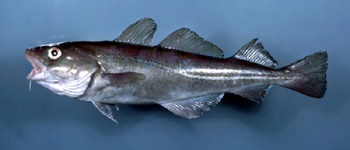SATS-3-little fish.jpg

Atlantic cod are abundant some years and not others. Credit: National Oceanic and Atmospheric Administration.
The economies of many countries depend on an abundant supply of fish from the sea. This is as true today as it was a century ago. But commercial fishermen have always known that the ocean’s harvest is not always bountiful — some years are better than others.In the late 19th century, it was thought that each of the important species of northern Europe — cod, haddock, herring, and whiting — was a large, sea-going population that migrated from place to place. For instance, when fishermen in Scotland caught few fish, most of the population was assumed to be somewhere else.
But at the turn of the century, thanks to the insights of a small group of Norwegian scientists and some especially productive years for cod and herring, there was a major shift in thinking about fish populations. The new ideas came from studying trends in fish less than a year old. In some years, these young fish were very abundant, but in other years they were scarce. These same trends occurred a few years later when the same fish were big enough to harvest. This meant that whatever caused the number of young fish to vary from year to year was probably responsible for fluctuations in the number of fish harvested years later.
Soon it became clear that the larval stages, when fish are only a few days or weeks old, were the bottleneck. In bad years, predation, starvation, and unsuitable environments decimate the newborns and with lasting effects. But in good years, larvae thrive and many more survive, providing fishermen with the bounty they seek.
copyright 2006, The University of Texas Marine Science Institute


